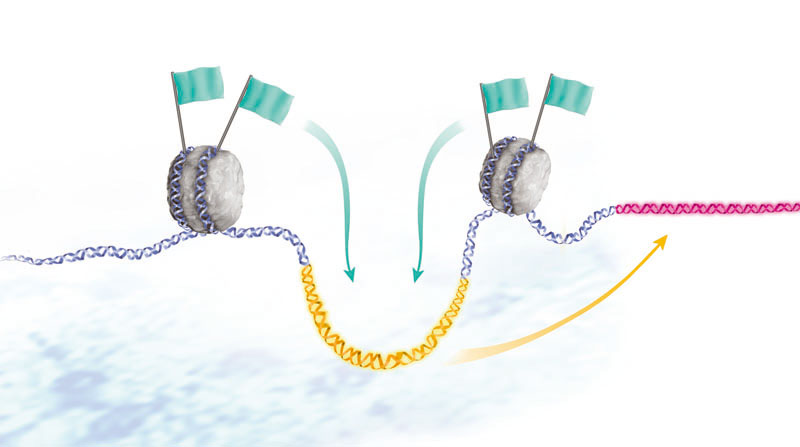Tracking genes’ remote controls
New method for observing enhancer activity during development

As an embryo develops, different genes are turned on in different cells, to form muscles, neurons and other bodily parts. Inside each cell’s nucleus, genetic sequences known as enhancers act like remote controls, switching genes on and off. Scientists at the European Molecular Biology Laboratory (EMBL) in Heidelberg, Germany, can now see – and predict – exactly when each remote control is itself activated, in a real embryo. Their work is published today in Nature Genetics.
Stefan Bonn, Robert Zinzen and Charles Girardot, all in Eileen Furlong’s lab at EMBL, found that specific combinations of chromatin modifications – chemical tags that promote or hinder gene expression – are placed at and removed from enhancers at precise times during development, switching those remote controls on or off.
“Our new method provides cell-type specific information on the activity status of an enhancer and of a gene, within a developing multicellular embryo,” says Furlong.
The scientists looked at known enhancers, and compared those that were active to those that were inactive in a type of cells called mesoderm at a particular time in fruit fly development. They noted what chromatin modifications each of those enhancers had, and trained a computer model to accurately predict if an enhancer is active or inactive, based solely on what chromatin marks it bears.
In future, the scientists plan to use this method to study the interplay between the activity status of an enhancer and the presence of key switches, termed transcription factors, at different stages of embryonic development, and in different tissue types, generating an ever more complete picture of how a single cell grows into a complex organism.
Source Article
Bonn, S. Zinzen, R.P., Girardot, C., Gustafson, E.H., Gonzalez, A.P., Delhomme, N., Ghavi-Helm, Y., Wilczynski, B., Riddell, A. & Furlong, E.E.M.
Tissue specific analysis of chromatin state reveals temporal signatures of enhancer activity during embryonic development. Nature Genetics, Advance Online Publication 8 January 2012.
DOI: 10.1038/ng.1064.



